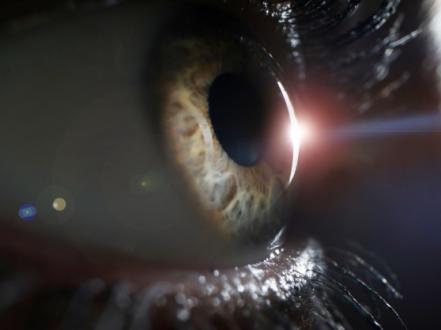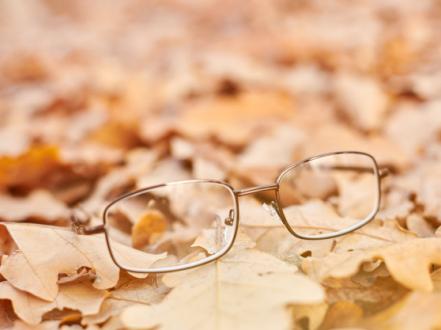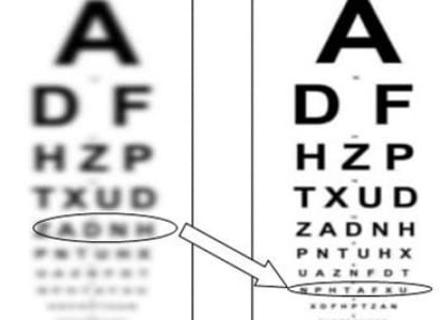Taking care of health issues that arise with becoming older is like erecting a strong wall to keep out invisible attackers. Our bodies undergo constant and sometimes drastic changes as we age, and it necessitates proactive tactics to deal with these changes. It is critical to safeguard our vision by being aware of what are the most common eye diseases.
Having a good grasp of eye issues allows us to better organize preventative care. From minor irritations to more serious illnesses, aging is a typical source of problems. We can better prepare for potential dangers and strengthen our defenses with this information.
Some eye issues run in families, while others are caused by things people do or don't do in their daily lives. Our ability to make quick decisions and respond to emergencies will benefit from a better grasp of these situations. Here, a lack of depth in understanding is not an option. We need to educate ourselves and seek out new information through study. Keep in mind that being knowledgeable is the first stage in promptly addressing eye health.
What are the top 10 eye diseases?
- Injury to the cornea. Inflammation of the cornea, or keratitis, isn't caused by aging per se, but it can get worse with time. Some of the symptoms include pain and sensitivity to light in the eyes. Injuries and infections are the main culprits. Potential dangers include problems with the environment and the immune system. For mild cases, you may try medicated eye drops or oral antibiotics; for severe cases, surgery may be necessary.
- A virus that causes conjunctivitis. Ocular secretions, redness, and irritation are signals of viral conjunctivitis. The intricate ocular membranes were penetrated by viruses, such as adenovirus, resulting in this condition. Being close to sick people or not washing your hands often both contribute to its spread. Medications and compresses for irritated eyes are pegged pivotal for alleviating the discomfort.
- Syndrome of dry eyes. Dry eye syndrome (DES) is characterized by burning, itching, and an excess of tears. Environmental irritants and hormonal shifts are also to blame, in addition to inadequate tear production. Risk factors include medication and excessive screen time. Artificial tears and occasional screen breaks are part of the treatment that aid in improving eye comfort.
- Presbyopia. It is a natural part of getting older that makes it harder for your eyes to focus on nearby objects. Because of visual impairments experienced while working up close, the visual settings are modified. Opposite to what most people think, presbyopia is actually caused by changes in lens flexibility that decrease accommodation. Significant risk factors include advanced age and a personal or family history of the condition. In order to alleviate eyestrain and enhance vision, contact lenses, bifocals, and reading glasses are commonly prescribed.
- Glaucoma. Most experts agree that glaucoma is one of the most devastating eye disorders in adults. Even if symptoms are silent, a sneaky development may be underway. The delicate tissues of the eye are stressed by high intraocular pressure. Aging and heredity are two risk factors that you must be aware of. However, ocular trauma may also play a role. In order to preserve eyesight, the treatment typically incorporates lasers, surgeries, and medicines.
- Lens opacity. The adult eye is prone to cataracts, that is characterized by reduced color perception, haziness, and sensitivity to glare. Age and sun exposure are the most common sources. Although it may appear to be an inevitable part of getting older, eye exams on time can detect it before it worsens. Based on the severity, care options may include surgery or corrective lenses.
- Detached retina. A detached retina can produce dazzling flashes, whirling particles, and a hazy appearance similar to a veil over the eyes. Injuries, changes in the anatomy of the eye caused by aging, and concealed eye disorders are common causes of this condition. If you want to repair the separation and keep your vision, you need to have surgery quickly.
- Macular degeneration. Foggy or twisted focused vision, problems with face recognition, and increased visual aberrations are symptoms of this growing eye condition. Changes brought on by aging, heredity, and environmental factors all contribute to this deterioration. Macular degeneration risk factors include smoking, obesity, and UV exposure. Shifts in lifestyle and nutrition, along with innovative treatments, have the potential to preserve remaining vision and delay the progression of the disease.
- Ocular anomaly. Eye pain, excessive tear production, and trouble closing the eyes can all be symptoms of exophthalmos, which is defined by protruding peepers. Possible causes of this protrusion include thyroid tumors, traumas, or anomalies. Genetics and health problems are the root causes of predispositions. It can happen as a result of the passage of time since the strength of the eye muscles decreases with age. Surgery to realign and operate the eyes properly is an option, as are treatments for underlying health problems.
- Weakness of the retina caused by diabetes. Age raises the incidence of diabetic retinopathy. However, poorly managed diabetes is the main reason. Difficulty seeing, floaters, and dark patches are all symptoms of vision loss. Surgery, medication, laser therapy, and behavioral modifications are all part of the treatment options.
If you think you could be going blind, how can you tell?
Changes in your vision can range from being barely perceptible, like a change in focus, to being completely noticeable, like persistent blurriness. If you strive to interpret possible vision loss, pay attention to these indications. The signs of different types of eye problems can range from blurred vision to issues with reading, seeing distant things, or telling colors apart. But your feelings are equally as important as your sight. There may be a problem with your eyesight if you have headaches, eye strain, or sensitivity to light. Experiencing unusual symptoms, such as halos surrounding lights or abrupt flashes, should also prompt urgent action.
In what ways does aging impact the eye?
Because of aging, our eyes change as follows:
- Lens: Presbyopia may result from the lens's flexibility deteriorating.
- Cornea: Some persons may suffer because of unpleasant hypersensitivity to light and glare, along with blurred vision.
- The macula: If you have macular degeneration, you may find it difficult to discern details.
Taking quick action is essential for your eye health.






